TLR7- and TLR9-responsive human B cells share phenotypic and genetic characteristics
- PMID: 25740945
- PMCID: PMC4369401
- DOI: 10.4049/jimmunol.1402690
TLR7- and TLR9-responsive human B cells share phenotypic and genetic characteristics
Abstract
B cells activated by nucleic acid-sensing TLR7 and TLR9 proliferate and secrete immune globulins. Memory B cells are presumably more responsive due to higher TLR expression levels, but selectivity and differential outcomes remain largely unknown. In this study, peripheral blood human B cells were stimulated by TLR7 or TLR9 ligands, with or without IFN-α, and compared with activators CD40L plus IL-21, to identify differentially responsive cell populations, defined phenotypically and by BCR characteristics. Whereas all activators induced differentiation and Ab secretion, TLR stimulation expanded IgM(+) memory and plasma cell lineage committed populations, and favored secretion of IgM, unlike CD40L/IL-21, which drove IgM and IgG more evenly. Patterns of proliferation similarly differed, with CD40L/IL-21 inducing proliferation of most memory and naive B cells, in contrast with TLRs that induced robust proliferation in a subset of these cells. On deep sequencing of the IgH locus, TLR-responsive B cells shared patterns of IgHV and IgHJ usage, clustering apart from CD40L/IL-21 and control conditions. TLR activators, but not CD40L/IL-21, similarly promoted increased sharing of CDR3 sequences. TLR-responsive B cells were characterized by more somatic hypermutation, shorter CDR3 segments, and less negative charges. TLR activation also induced long positively charged CDR3 segments, suggestive of autoreactive Abs. Testing this, we found culture supernatants from TLR-stimulated B cells to bind HEp-2 cells, whereas those from CD40L/IL-21-stimulated cells did not. Human B cells possess selective sensitivity to TLR stimulation, with distinctive phenotypic and genetic signatures.
Copyright © 2015 by The American Association of Immunologists, Inc.
Figures
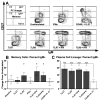
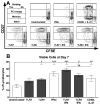

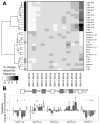
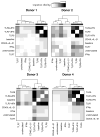

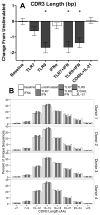
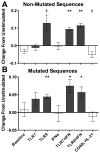
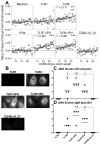
Similar articles
-
Toll-like receptor 7 and 9 defects in common variable immunodeficiency.J Allergy Clin Immunol. 2009 Aug;124(2):349-56, 356.e1-3. doi: 10.1016/j.jaci.2009.05.019. Epub 2009 Jul 9. J Allergy Clin Immunol. 2009. PMID: 19592080 Free PMC article.
-
B cell TLR1/2, TLR4, TLR7 and TLR9 interact in induction of class switch DNA recombination: modulation by BCR and CD40, and relevance to T-independent antibody responses.Autoimmunity. 2015 Feb;48(1):1-12. doi: 10.3109/08916934.2014.993027. Autoimmunity. 2015. PMID: 25536171 Free PMC article.
-
Cell-intrinsic expression of TLR9 in autoreactive B cells constrains BCR/TLR7-dependent responses.J Immunol. 2015 Mar 15;194(6):2504-12. doi: 10.4049/jimmunol.1402425. Epub 2015 Feb 13. J Immunol. 2015. PMID: 25681333 Free PMC article.
-
The role of age-associated B cells in systemic lupus erythematosus.J Autoimmun. 2025 Jun;154:103433. doi: 10.1016/j.jaut.2025.103433. Epub 2025 May 6. J Autoimmun. 2025. PMID: 40334618 Review.
-
Toll-like receptors 7 and 9 regulate the proliferation and differentiation of B cells in systemic lupus erythematosus.Front Immunol. 2023 Feb 15;14:1093208. doi: 10.3389/fimmu.2023.1093208. eCollection 2023. Front Immunol. 2023. PMID: 36875095 Free PMC article. Review.
Cited by
-
Pattern recognition receptor ligand-induced differentiation of human transitional B cells.PLoS One. 2022 Aug 30;17(8):e0273810. doi: 10.1371/journal.pone.0273810. eCollection 2022. PLoS One. 2022. PMID: 36040923 Free PMC article.
-
Serum Free Immunoglobulins Light Chains: A Common Feature of Common Variable Immunodeficiency?Front Immunol. 2020 Aug 11;11:2004. doi: 10.3389/fimmu.2020.02004. eCollection 2020. Front Immunol. 2020. PMID: 32849664 Free PMC article.
-
Single-Cell Transcriptomic Analyses Define Distinct Peripheral B Cell Subsets and Discrete Development Pathways.Front Immunol. 2021 Mar 18;12:602539. doi: 10.3389/fimmu.2021.602539. eCollection 2021. Front Immunol. 2021. PMID: 33815362 Free PMC article.
-
Complement Receptor Type 1 (CR1, CD35), the Inhibitor of BCR-Mediated Human B Cell Activation, Differentially Regulates TLR7, and TLR9 Induced Responses.Front Immunol. 2019 Jul 2;10:1493. doi: 10.3389/fimmu.2019.01493. eCollection 2019. Front Immunol. 2019. PMID: 31312202 Free PMC article.
-
Intranasal GSK2245035, a Toll-like receptor 7 agonist, does not attenuate the allergen-induced asthmatic response in a randomized, double-blind, placebo-controlled experimental medicine study.PLoS One. 2020 Nov 9;15(11):e0240964. doi: 10.1371/journal.pone.0240964. eCollection 2020. PLoS One. 2020. PMID: 33166307 Free PMC article. Clinical Trial.
References
-
- Bekeredjian-Ding IB, Wagner M, Hornung V, Giese T, Schnurr M, Endres S, Hartmann G. Plasmacytoid dendritic cells control TLR7 sensitivity of naive B cells via type I IFN. J Immunol. 2005;174:4043–4050. - PubMed
-
- Glaum MC, Narula S, Song D, Zheng Y, Anderson AL, Pletcher CH, Levinson AI. Toll-like receptor 7-induced naive human B-cell differentiation and immunoglobulin production. J Allergy Clin Immunol. 2009;123:224–230.e224. - PubMed
-
- He B, Qiao X, Cerutti A. CpG DNA induces IgG class switch DNA recombination by activating human B cells through an innate pathway that requires TLR9 and cooperates with IL-10. J Immunol. 2004;173:4479–4491. - PubMed
-
- Bernasconi NL, Onai N, Lanzavecchia A. A role for Toll-like receptors in acquired immunity: up-regulation of TLR9 by BCR triggering in naive B cells and constitutive expression in memory B cells. Blood. 2003;101:4500–4504. - PubMed
-
- Giordani L, Sanchez M, Libri I, Quaranta MG, Mattioli B, Viora M. IFN-alpha amplifies human naive B cell TLR-9-mediated activation and Ig production. J Leukoc Biol. 2009;86:261–271. - PubMed
Publication types
MeSH terms
Substances
Grants and funding
LinkOut - more resources
Full Text Sources
Other Literature Sources

